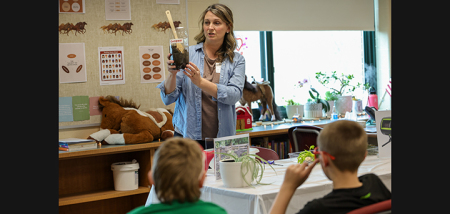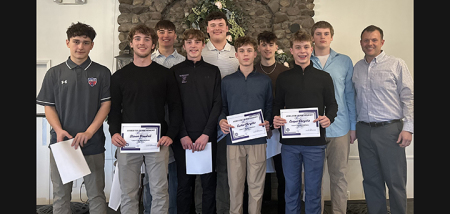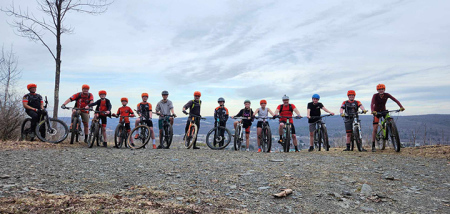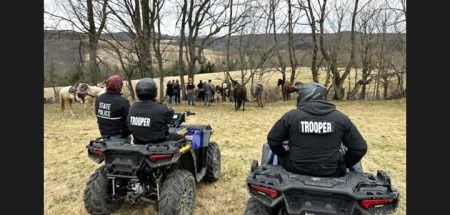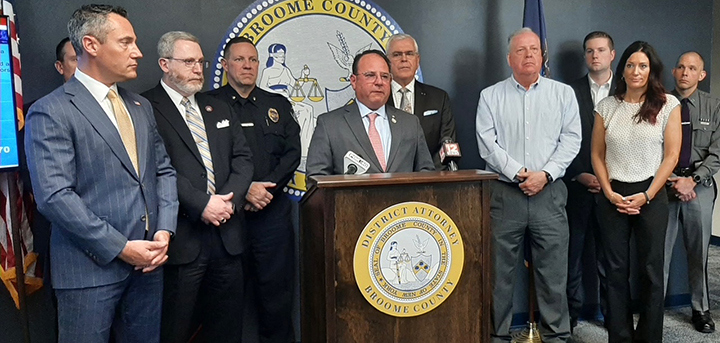Food Plot Primer
Published:
April 27th, 2017
Eric Davis
Mayhood’s Sporting Goods
CHENANGO COUNTY – When you watch almost any hunting show on television that has whitetail deer hunting as the main focus, the topic of food plots almost always gets brought up.
When most people hear food plots mentioned, they focus on the idea of a field where the deer walk out and get shot. That can be the end result, but a lot of work goes into food plots, especially if you want them to be successful.
Once it is decided that you want to plant a food plot there are many questions you need to ask yourself. First and foremost, what is the goal of your food plot? Is it solely intended for harvesting a deer on opening day of gun season? Or do you want to provide a source of nutrients from June through December? Or is it going to be a late season food source for deer to use after the season is over to get them trough the winter?
The answer to this question can get to looking in the right direction as to what types of plants you want to purchase. Some plants are better suited for providing protein for antler growth, or milk production in the summer compared to carbohydrates needed for energy and packing on fat reserves in the fall.
If you are near a large agricultural field or apple orchard, it may be smart to plant something that deer will stop and eat a little of on their way to the big feeding location.
An important step that is often overlooked is doing a soil sample. Knowing the soil pH and what you need to do to correct any soil deficiencies can turn an okay plot into an amazing plot.
A lot of food plot seed companies offer a simple kit where you take the sample and mail it to a lab where it is analyzed. Then they send you the results and what they recommend for you to do. You can take this information into account when doing site preparation, such as plowing or discing and can add fertilizer or lime. Make sure to allow some time for the soil to change, don’t plant your seeds right after fertilizing or liming your plot. So make sure you get the soil tested well in advance of when you need to be planting your seed in case you do need to make adjustments to the soil.
Plot location plays an important role in how effective the plot itself can be. Planting a carbohydrate rich food source next to a large agricultural field that has corn planted might not attract deer the same way as a protein rich food plot would.
Think of it this way, you don’t get all of your dietary needs by eating only red meat for every meal of every day. Deer are the same way. They have to eat a variety of food to get the nutrients they need. By supplying them with the harder-to-get nutrients you can draw deer in from a greater area.
Hidden food plots are great at bringing in deer during daylight hours. Being secluded and not out in the open where predators can see them or hunters can shoot at them will give deer an added sense of security. Make sure you pick a seed variety that can handle a lower amount of sunlight to grow if you plan on planting a secluded plot. If you are going to make a secluded plot by cutting down trees and brush to allow more light in for the plants, make the plot a rectangle where the long edge runs east-west. This allows for daylight to hit the plot for a greater period of time during the day. Make the short side of the rectangle only 50-75 yards long so if deer are in the food plot they are close if you have a tree stand or ground blind on the edge of the plot.
Some people like making an hourglass shaped plot or a L-shape, that way deer can’t see the whole plot without walking to the pinch point in the middle. This allows you to set your stand and have a pretty good idea of where the deer will have to walk to see the other part of the food plot.
When you go to plant your food plot, it may be beneficial to over-seed the plot slightly. This allows for some seed to be lost to birds/rodents that might find the seed before it can germinate. It also can help in case something else happens such as bad weather such as rain, that could take awesome of the seed.
If you are lucky and have no problems, once the seeds germinate they will compete with each other and the strongest plants will survive. Or you can go through and remove some of the young plants yourself to allow more resources to be had by the remaining plants.
If your plot gets extremely tall you can mow the top of the plants off. Try to get to them before they flower and can become less attractive to deer. Don’t mow too much or you can do more harm than good by leaving small plants that can get eaten before growing back enough.
Put a trail camera up to watch the plot so you can see how many deer are using the plot and what time of day. This will aid in knowing where to hunt in the morning or evening to improve your odds of success.
– Submitted by Mayhood's Sporting Goods
Comments

